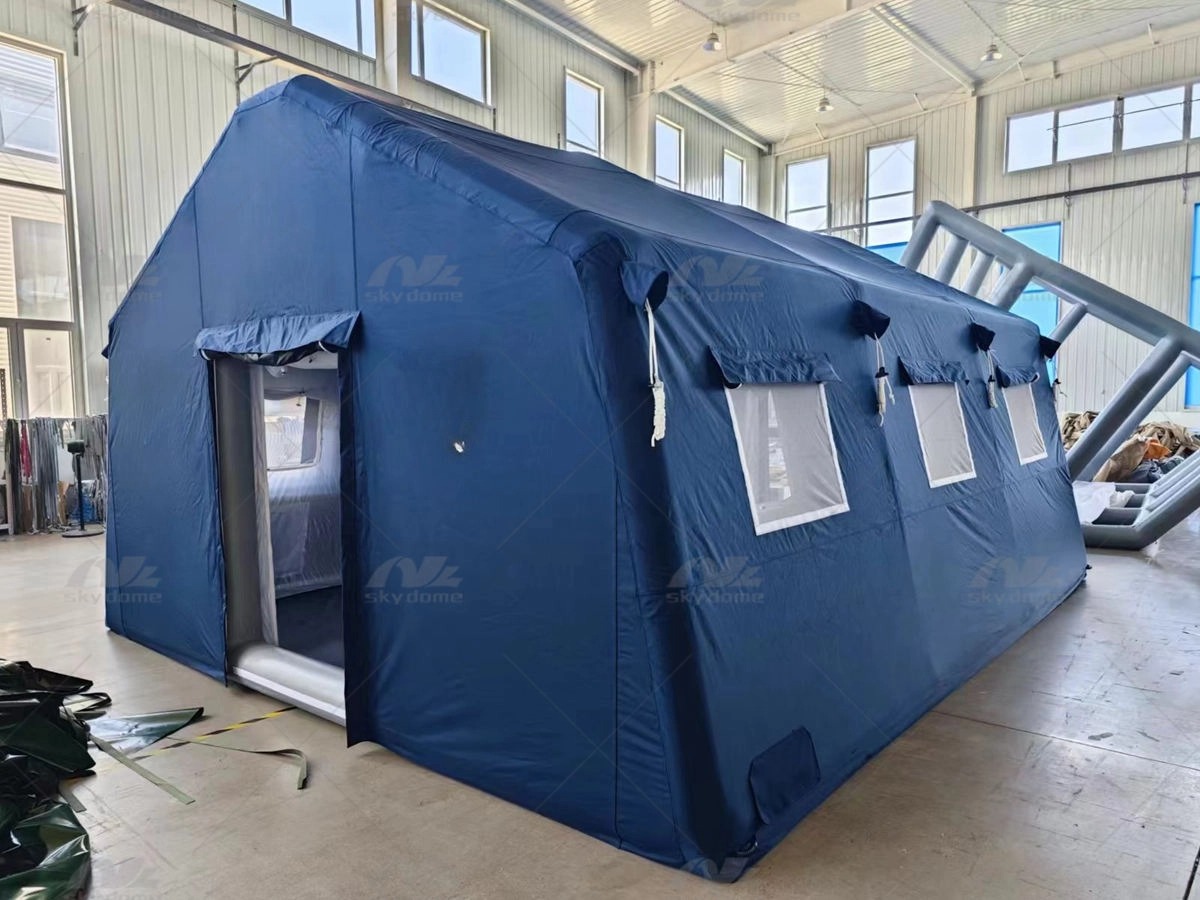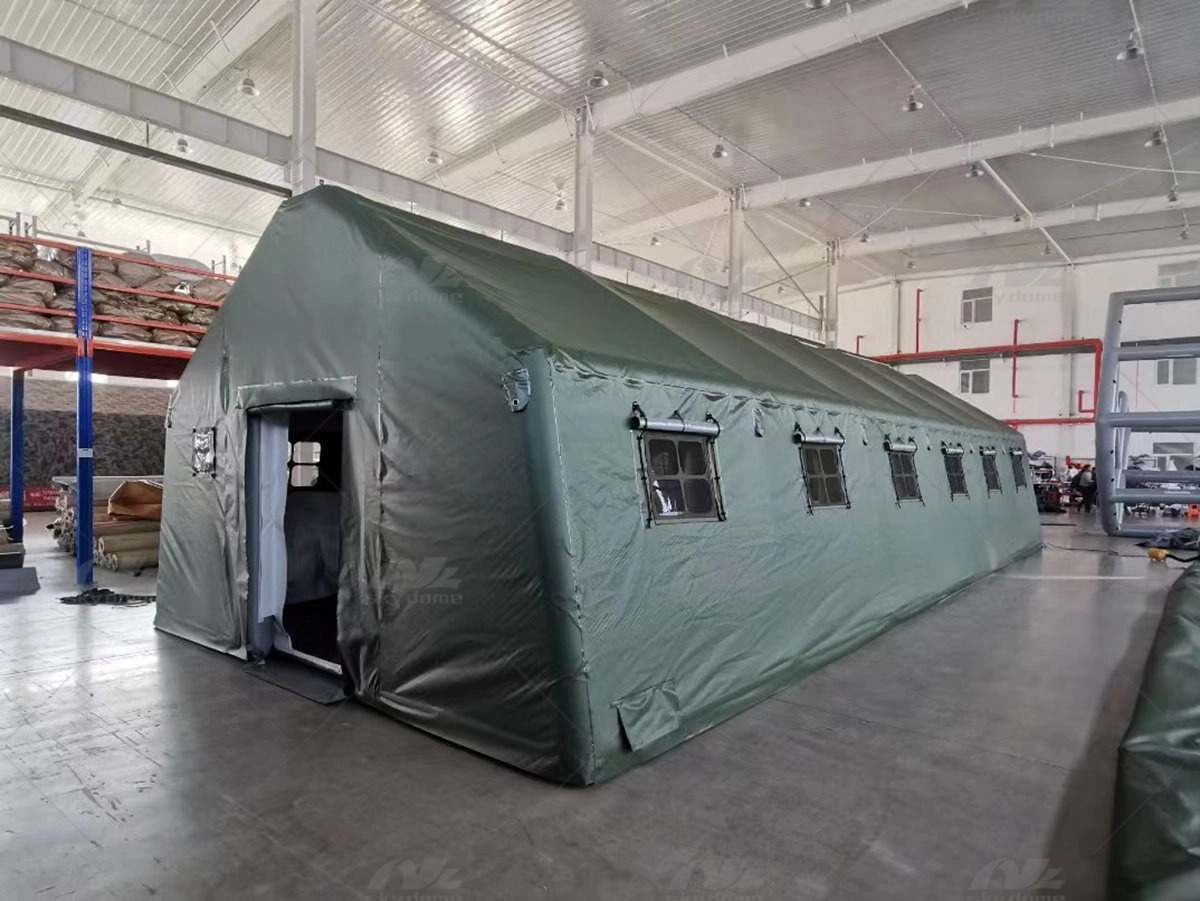
Inflatable tents have emerged as a groundbreaking innovation in the world of outdoor gear, offering a modern twist on traditional pole tents. Whether you're preparing for a weekend camping trip or setting up a temporary outdoor shelter, the inflatable tent promises ease of setup, versatility, and mobility. But a critical question still looms for many outdoor enthusiasts and event organizers: Can inflatable tents handle strong wind gusts? In this article, we explore the construction, engineering, and wind resistance capabilities of inflatable tents, including air membrane inflatable tents, outdoor inflatable tents, and inflatable camping tents designed for temporary outdoor activities.
Understanding the Structure of an Inflatable Tent
Inflatable tents differ significantly from conventional tents in their structural integrity. Instead of relying on rigid metal or fiberglass poles, these tents use inflated air beams to form the skeleton of the tent. These beams are typically made from high-tensile thermoplastic polyurethane (TPU) or PVC-coated polyester, materials known for their strength and elasticity.
This air-filled frame behaves like a shock absorber. Unlike metal poles, which can snap under extreme pressure, air beams bend and flex in response to wind gusts. This flexibility allows inflatable tents to distribute wind force more evenly across the structure, reducing the likelihood of collapse.
In advanced models such as air membrane inflatable tents, the tension between the outer membrane and internal air chambers adds another layer of resilience. These tents are often engineered with a double-layered system: a pressurized inner chamber and a protective outer fabric layer. This design helps them withstand not only wind but also snow and rain loads in harsh environments.
Wind Resistance Ratings: What to Expect from Inflatable Camping Tents
When assessing the wind resistance of any inflatable camping tent, it's crucial to examine its wind rating, which is usually measured in kilometers per hour (km/h) or miles per hour (mph). Standard inflatable tents can typically withstand wind speeds of 40–60 km/h (25–37 mph), while more rugged, high-performance models—especially those used in military or professional expedition contexts—can resist gusts exceeding 100 km/h (62 mph).
The wind resistance largely depends on the following design elements:
Shape: Dome-shaped inflatable tents are more aerodynamic, allowing wind to glide over their surface.
Anchoring System: Strong ground stakes, sandbags, and guy ropes play a critical role in keeping the tent secure.
Material Quality: Ripstop fabrics and reinforced seams help maintain integrity under stress.
Inflation Pressure: Properly pressurized air beams (usually around 7–9 PSI) create a firm structure that can hold its shape under pressure.
Below is a comparison table outlining wind resistance across different types of inflatable tents:
| Tent Type | Typical Wind Resistance | Recommended Use Case |
| Basic Inflatable Tent | Up to 40 km/h | Backyard use, light camping |
| Outdoor Inflatable Tent | 50–70 km/h | Family camping, recreational trips |
| Air Membrane Inflatable Tent | 80–100 km/h+ | Extreme weather, long-term outdoor use |
| Inflatable Tent for Activities | 60–90 km/h | Temporary events, emergency shelter |
Field Performance: Real-World Wind Scenarios
While lab testing provides theoretical data, real-world performance is what ultimately matters. Users of outdoor inflatable tents frequently report that these structures hold up surprisingly well in adverse weather. The key advantage is their low center of gravity and flexible framework, which allows them to sway with the wind instead of resisting it rigidly.
One user report noted that their inflatable camping tent withstood a sudden storm with gusts reaching 80 km/h, while nearby pole tents collapsed or suffered damage. Another frequent benefit is rapid setup and takedown, allowing users to react quickly to weather changes.
Still, performance is highly dependent on proper installation. An incorrectly staked inflatable tent is vulnerable, regardless of its engineering. Ensuring that all anchor points are tensioned and aligned against the direction of prevailing winds is vital for stability.

Advantages of Using an Inflatable Tent in Windy Conditions
So, what makes inflatable tents a smart choice in windy weather compared to traditional pole tents? Let’s take a closer look at the core benefits:
1. Shock Absorption
Air beams act like shock absorbers, flexing without breaking. Unlike rigid poles, there's no risk of structural failure due to snapping.
2. Seamless Load Distribution
The air beam structure spreads the load more evenly, preventing stress concentration in one area.
3. Quick Deployment
Inflatable tents can be fully assembled in under 10 minutes, reducing the window of exposure to sudden wind gusts during setup.
4. Reduced Weight
Lighter materials mean easier transport and lower inertia, making it safer if the tent does shift or move slightly in wind.
5. Modular Design
Many inflatable tents for temporary outdoor activities are modular, allowing users to adapt the structure with additional chambers or anchoring systems based on environmental conditions.
Precautionary Tips for Windy Environments
Even with robust design, it’s essential to apply best practices when using an inflatable tent in windy conditions:
Stake Deep and Angle Properly: Use long, angled stakes to secure the tent into the ground.
Use Guy Lines Generously: Add extra guy lines where possible to reduce the tent’s swaying motion.
Inflate to Manufacturer Specifications: Over-inflating or under-inflating can weaken the tent’s structural balance.
Avoid Exposed Ridges or Peaks: Choose a setup location that offers natural windbreaks like trees or terrain elevation.

FAQ: Common Questions About Inflatable Tents and Wind Performance
Q1: Will an inflatable tent deflate if punctured during high winds?
Most inflatable tents have multiple independent air chambers, so a puncture in one section won’t collapse the entire structure. Some models even use self-sealing valves to isolate punctures.
Q2: Can inflatable tents be used in hurricanes or typhoons?
While high-performance air membrane inflatable tents can handle strong wind gusts, they are not recommended for extreme hurricane conditions unless they are specifically engineered and rated for such environments.
Q3: How often should I check inflation pressure during windy days?
It’s advisable to check every 6–8 hours during continuous wind exposure to ensure optimal pressure levels.
Conclusion
In conclusion, inflatable tents—especially modern air membrane inflatable tents and inflatable tents for temporary outdoor activities—are highly capable of handling strong wind gusts when used and installed correctly. Their air-supported structure, flexibility, and advanced materials make them a safe, convenient, and efficient option for outdoor enthusiasts, emergency responders, and event planners alike.
Whether you’re setting up a simple inflatable camping tent or a larger outdoor inflatable tent for a temporary shelter, understanding wind dynamics and applying best practices will ensure your tent stands strong when the winds start to howl.


















